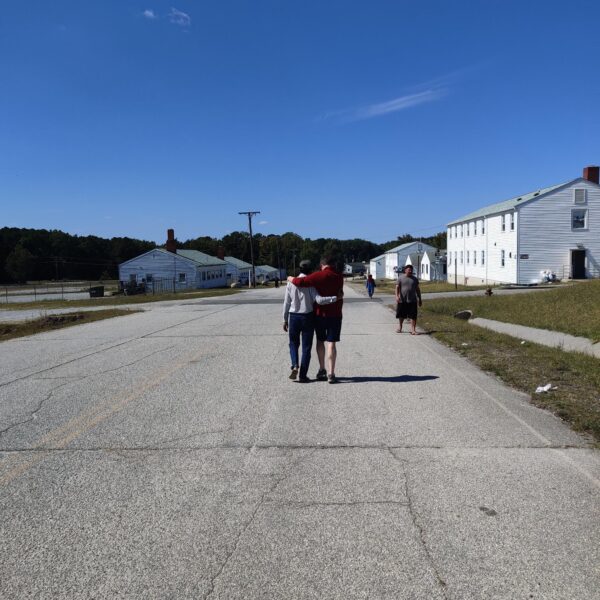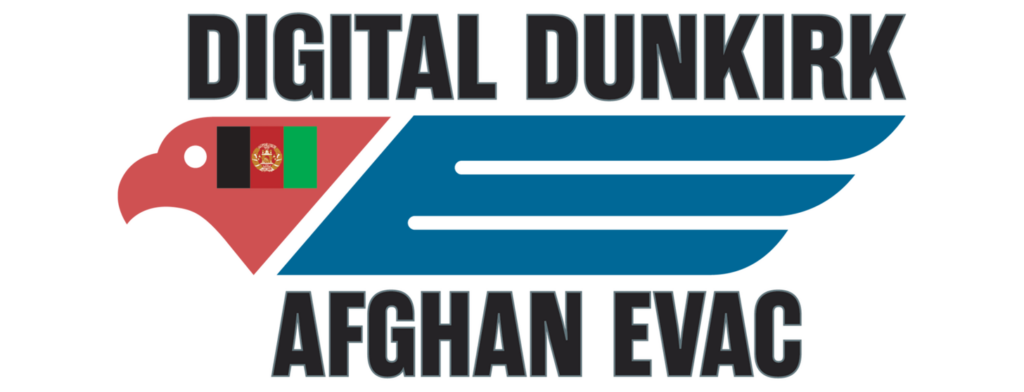IAVA | October 5, 2021
Look for the Helpers

Matt Zeller offers a report from Afghan Evac. They’re still getting people out, slowly, and they’re not stopping.

by Matt Zeller
“Look For The Helpers.”
Mr. Rogers had a lot of sage advice, but none more salient than those four words.
For the better part of the last several months, the team of advocates and activists who have attempted to rescue our Afghan wartime allies from certain Taliban death have lived our worst fears, a waking nightmare.
Of the list of 23 names I personally was trying to help escape Kabul after the fall, I was only able to get out five – the other 18 remain in hiding, praying we honor our promise before the Taliban makes good on theirs’. My ratio 5:23, a batting average of .217, is par for the course among the greater Digital Dunkirk / #AfghanEvac movement. The most recent figures released from the government show that of the 124,000 people evacuated between 15 – 31 AUG, 60,000 were Afghans. Of those 60,000, 3% – 1800 people – were special immigration visa applicants (the type of visa only obtained by our wartime allies – the interpreters, aid workers, engineers, etc. without whom we could not have accomplished anything). The Association of Wartime Allies estimates that up to 85,000 special immigrant visa candidates were likely left behind – some 95% of those needing evacuation.
In short – we have many miles to go before we sleep. The work to rescue those still trapped behind enemy lines, facing their now constant wrath, will take years – likely the better part of the rest of our lives – and if the last month is any indication of the future, most efforts will almost certainly fail. Since 31 AUG, only one flight has left Afghanistan with SIVs on board – it landed in Chicago on 30 September. No flights with SIVs are currently scheduled as of this writing.
I tell you all of this because despite the sorrow and despair I feel for having watched helplessly as our country all but abandoned our Afghan wartime allies, my heart currently swells with joy.
On Friday 1 OCT, I had the privilege of journeying to Fort Pickett, VA to visit with the 6,000 Afghans who remain housed there. I had gone previously a few weeks ago and during that visit had learned that most Afghans in the camp had arrived with nothing more than the clothes on their backs. While they had access to regular showers and laundry facilities, they had no clean clothing to change into while they washed their dirty clothing. Thus, since that initial trip, I’ve been organizing a clothing donation drive to help fill that immediate need.
Mr. Rogers said to look for the helpers – I find myself surrounded by them. My friends Katie and Kristin organized among their respective social networks to fill my garage with more bags and boxes of donated clothing than my SUV could carry. Complete strangers have inundated my driveway and doorstep with Amazon boxes filled to the brim with toys for kids, toiletries, crayons, and soccer balls. My friend Ada, a Bosnian refugee herself, arranged for her Mosque to donate several boxes filled with Qur’ans.
When I arrived on base, the process to drop off the donated items could not be smoother. Everything first goes to a warehouse on base currently run by a team of US Marines and volunteers from Team Rubicon. Donated items are first sorted and then housed in the warehouse for future distribution. When it comes time to hand the items out, they are trucked over to the Afghans camp where a distribution “store” of sorts has been set up. Afghans que up in line to receive whatever items they claim they need at any given moment. When I first visited in early September, most Afghans were wearing the same sweat stained dirty clothing they wore they day they escaped Kabul – on my most recent visit they were all wearing a change of clothes and had several more outfits from which they could choose.
I sat with the Afghans for hours during my visit. Being among them rejuvenates me and restores my soul. When I first arrived, my friend Ziaulhaq ushered me into his makeshift home within a renovated WWII barracks building. Using donated Red Cross blankets as walls, the Afghans have rearranged the bunk beds and footlockers to form “rooms” within the open bay. There are twelve families per floor, two floors per building, for a total of 24 families per building. They share two common bathrooms with six showers, three toilets, and three sinks in each for a total of 12 showers and six toilets and sinks per building.
Like any other Afghan home, one removes one’s footwear immediately upon entering through the “door” (also a red cross blanket). Inside each “room” the Afghans have attempted to carve out a little slice of home/Afghanistan. Red Cross blankets adorn the floors as make shift rugs. As I sat down to visit with Z and his family, his wife brought out a bowl of three apples, an orange, and a kiwi and several bottles of water. I looked at the food – all they had to offer – and marveled at how folks with so little could make me feel like the most welcome guest in the world. They have nothing and yet will give you everything to make you feel at home.
The mood in the camp is palpable joy. Kids run around chasing soccer balls and US Marines (who honestly look not much older than the Afghan children chasing after them) and run up to every American they see wanting to fist bump and show off their English. Families take lazy afternoon picnics in the shade and have begun to marvel at first scenes of American fall (none have ever seen a leaf change color like they do here in America in such abundance). Women stroll the streets unmolested and independent – as they should be allowed to do everywhere.
Yet for every happy moment, there is an ever-present nagging sorrow. The Afghans are happy and relieved to be alive, yet harbor the worst fears for their families left behind. Every hand shake and hug I received upon meeting someone was immediately followed by a request to personally help get their family out of Afghanistan. All I could offer is that our coalition will not rest until mission complete – that every single Afghan to whom we made a promise is here in the US, safe and sound.
I wish every American could meet these people and hear their stories. They have survived one of the most traumatic ordeals one can imagine, they have left everything behind and arrived with nothing but hope and dreams. They are the most remarkable and resilient people I’ve ever known. I love them dearly. I don’t know if they know this or not, but helping them is the most healing thing I’ve ever done since getting home from the war. Sometimes it feels I need them more than they need me – especially as of late, which is why I plan to return to Fort Pickett weekly until my garage is empty. At the rate at which boxes of donated items continues to arrive, I’ll be going well into 2022.
Look for the helpers – they’re all around us.
Matt Zeller, is the Co-Founder of No One Left Behind, a Truman National Security Fellow and an adjunct fellow at the American Security Project. He authored Watches Without Time (Just World Books, 2012), which chronicles his experience serving as an embedded combat adviser with the Afghan security forces in Ghazni, Afghanistan, in 2008. He was the Democratic nominee for Congress in 2010 in NY’s 29th Congressional District. He earned a BA in Government from Hamilton College and a MPA and a MA-IR from The Maxwell School at Syracuse University.
Follow him on Twitter at @mattczeller.
This piece was originally published by the Experiment on October 3, 2021.





